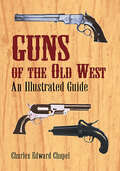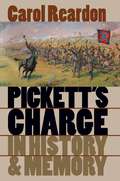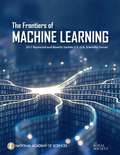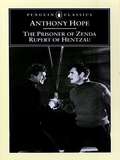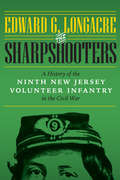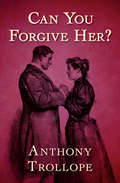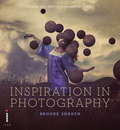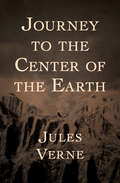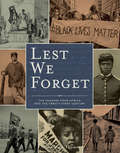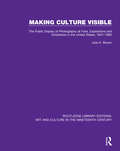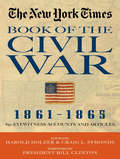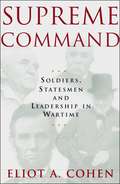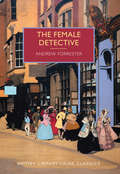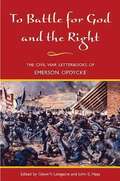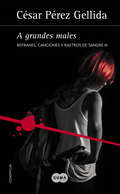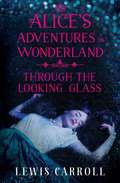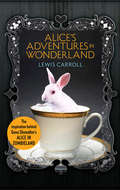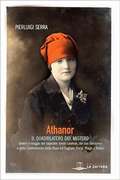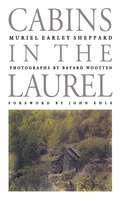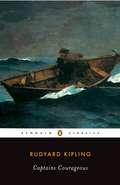- Table View
- List View
Guns of the Old West: An Illustrated Guide (Dover Military History, Weapons, Armor)
by Charles Edward ChapelFirearms played an important role on the American frontier. Used to hunt animals for food and clothing, they also safeguarded one’s home against outlaws and other hostile elements. This definitive, scrupulously researched work describes and illustrates the many different weapons that opened up and secured the American West. Enhanced with colorful anecdotes, the vividly detailed narrative tells the dramatic story of shoulder arms, hand guns, percussion and cartridge weapons, and describes the hunters, settlers, peace officers, stagecoach drivers, soldiers, range detectives, rustlers, outlaws, Indian chiefs, and other picturesque characters who used them.Here are detailed descriptions and illustrations of the Kentucky rifle that saw battle in the American Revolution and in the War of 1812; the repeating rifle used in the Civil War; the Sharps rifle that wreaked havoc during the great buffalo hunts; the Colt revolver, used by cowboys and outlaws alike; the fast and reliable Winchester rifle, the most widely used shoulder arm of the post-Civil War era; as well as flintlock pistols, derringers, muskets, buffalo guns, carbines, signal pistols, Confederate revolvers, and many other celebrated firearms.Illustrated with nearly 500 photographs and line illustrations, this classic reference will not only be invaluable to dealers and collectors but will also appeal to Americana devotees, weaponry enthusiasts, and students of the American West.
Living My Life
by Emma GoldmanAnarchist, journalist, drama critic, advocate of birth control and free love, Emma Goldman was the most famous—and notorious—woman in the early twentieth century. This abridged version of her two-volume autobiography takes her from her birthplace in czarist Russia to the socialist enclaves of Manhattan’s Lower East Side. Against a dramatic backdrop of political argument, show trials, imprisonment, and tempestuous romances, Goldman chronicles the epoch that she helped shape: the reform movements of the Progressive Era, the early years of and later disillusionment with Lenin’s Bolshevik experiment, and more. Sounding a call still heard today, Living My Life is a riveting account of political ferment and ideological turbulence. First time in Penguin Classics Condensed to half the length of Goldman's original work, this edition is accessible to those interested in the activist and her extraordinary era .
Pickett's Charge in History and Memory
by Carol ReardonIf, as many have argued, the Civil War is the most crucial moment in our national life and Gettysburg its turning point, then the climax of the climax, the central moment of our history, must be Pickett's Charge. But as Carol Reardon notes, the Civil War saw many other daring assaults and stout defenses. Why, then, is it Pickett's Charge at Gettysburg--and not, for example, Richardson's Charge at Antietam or Humphreys's Assault at Fredericksburg--that looms so large in the popular imagination? As this innovative study reveals, by examining the events of 3 July 1863 through the selective and evocative lens of 'memory' we can learn much about why Pickett's Charge endures so strongly in the American imagination. Over the years, soldiers, journalists, veterans, politicians, orators, artists, poets, and educators, Northerners and Southerners alike, shaped, revised, and even sacrificed the 'history' of the charge to create 'memories' that met ever-shifting needs and deeply felt values. Reardon shows that the story told today of Pickett's Charge is really an amalgam of history and memory. The evolution of that mix, she concludes, tells us much about how we come to understand our nation's past."A fresh look at the disastrous assault.--New Yorker"A splendidly lively study of the manipulation, not necessarily deliberate or malign, of public opinion.--Atlantic Monthly"Exceptionally lucid. . . . This fine book provides vivid evidence of just how far we will go to alchemize fantasy into fact.--Jonathan Yardley, Washington Post"Well-written and meticulously researched, Pickett's Charge in History and Memory utilizes first-rate scholarship to tell a fascinating story. . . . Should win a wide audience among general readers.--Civil War HistoryAssessing the myths and facts surrounding Pickett's Charge, Carol Reardon explores why this event endures so strongly in the American imagination. She demonstrates that the story told today of the charge is really an amalgam of history and memory and that the evolution of that mix tells us much about how we come to understand our nation's past.-->
Pickett’s Charge, July 3 and Beyond, Omnibus E-book
by Earl J. Hess Carol ReardonPickett's Charge, the assault on the Union lines on Cemetery Ridge ordered by Robert E. Lee on 3 July 1863, the last day of the Battle of Gettysburg, holds a central place in the nation's collective memory of the Civil War. Available for the first time as an Omnibus E-book Edition, this two-volume set provides readers with an integrated view of the Charge, from the battlefield to the American imagination. The Omnibus comprises Earl J. Hess's Pickett's Charge: The Last Attack at Gettysburg, a detailed and authoritative account of the Charge itself, and Carol Reardon's Pickett's Charge in History and Memory, which provides the rest of the story: how, and why, Pickett's Charge became so singularly important to our national memory of the Civil War.In Pickett's Charge: The Last Attack at Gettysburg, Hess offers the definitive history of the most famous military action of the Civil War. He transforms exhaustive research into a moving narrative account of the assault from both Union and Confederate perspectives, analyzing its planning, execution, aftermath, and legacy. most famous military action of the Civil War. He transforms exhaustive research into a moving narrative account of the assault from both Union and Confederate perspectives, analyzing its planning, execution, aftermath, and legacy.In Pickett's Charge in History and Memory, Reardon examines the events of 3 July 1863 through the selective and evocative lens of 'memory' and reveals that we can learn much about why it endures so strongly in the American imagination. Over the years, soldiers, journalists, veterans, politicians, orators, artists, poets, and educators, Northerners and Southerners alike, shaped, revised, and even sacrificed the 'history' of the charge to create 'memories' that met ever-shifting needs and deeply felt values. Reardon shows that the story told today of Pickett's Charge is really an amalgam of history and memory. The evolution of that mix, she concludes, tells us much about how we come to understand our nation's past.
The Frontiers of Machine Learning: 2017 Raymond And Beverly Sackler U. S. -u. K. Scientific Forum
by National Academy of SciencesThe field of machine learning continues to advance at a rapid pace owing to increased computing power, better algorithms and tools, and greater availability of data. Machine learning is now being used in a range of applications, including transportation and developing automated vehicles, healthcare and understanding the genetic basis of disease, and criminal justice and predicting recidivism. As the technology advances, it promises additional applications that can contribute to individual and societal well-being. The Raymond and Beverly Sackler U.S.-U.K. Scientific Forum “The Frontiers of Machine Learning” took place on January 31 and February 1, 2017, at the Washington, D.C., headquarters of the National Academies of Sciences, Engineering, and Medicine. Participants included industry leaders, machine learning researchers, and experts in privacy and the law, and this report summarizes their high-level interdisciplinary discussions.
The Prisoner of Zenda and Rupert of Hentzau
by Anthony HopeSir Anthony Hope Hawkins (1863-1933) was training to become a lawyer and barrister when he wrote his sixth novel, "The Prisoner of Zenda", in 1894. It took one month to finish the first draft, and it quickly achieved such great success that Hope turned to full-time writing. The story is set in the fictional country of Ruritania, on the eve of the new king's coronation. When the king is suddenly abducted, an Englishman who bears a striking resemblance to him is brought in as a political decoy. Like most of Hope's stories, the novel is full of plot twists, complications, villains, forbidden love, and an ultimate sense of duty. Included in this edition is the sequel to "Zenda", "Rupert of Hentzau", which deals with the same fictional country, and many of the same characters. These two works are classics of English literature, whose themes and attraction transcend time, and have inspired many stage, film and television adaptations.
The Sharpshooters: A History of the Ninth New Jersey Volunteer Infantry in the Civil War
by Edward G. LongacreRecruited as sharpshooters and clothed in distinctive uniforms with green trim, the hand-picked regiment of the Ninth New Jersey Volunteer Infantry was renowned and admired far and wide. The only New Jersey regiment to reenlist for the duration of the Civil War at the close of its initial three-year term, the Ninth saw action in forty-two battles and engagements across three states. Throughout the South, the regiment broke up enemy camps and supply depots, burned bridges, and destroyed railroad tracks to thwart Confederate movements. Members of the Ninth also suffered disease and starvation as POWs at the notorious Andersonville prison camp in Georgia. Recruited largely from socially conservative cities and villages in northern and central New Jersey, the Ninth Volunteer Infantry consisted of men with widely differing opinions about the Union and their enemy. Edward G. Longacre unearths these complicated political and social views, tracing the history of this esteemed regiment before, during, and after the war—from recruitment at Camp Olden to final operations in North Carolina.
Can You Forgive Her?: First Of The Palliser Novels (The Palliser Novels #1)
by Anthony TrollopeThis revealing romp through proper society follows three different women who dare to defy Victorian standards.Can You Forgive Her? comically intertwines the stories of three very independent-minded women who each desires to decide her own fate in a world where love comes second to obedience and familial expectations set them apart from their peers. First and foremost is the spirited Alice Vavasor, whose indecision and repeated rejections of two different swains have made her a woman of both substance and suspicion. Equally determined to have her way is the recently widowed Mrs. Greenow, who was married to a wealthy man at a young age, and who can now decide whom she will take as a husband. And finally, there is the tale of the brazen, free-thinking Glencora M&’Cluskie, including her rocky marriage to the loving—but hardheaded—Plantagenet Palliser, whose powerful family appears throughout Anthony Trollope&’s works. In this classic novel of social satire, Trollope&’s deft humor and biting examination of the lives and legacies of high society remain as entertaining and inviting as ever. Can You Forgive Her? is the 1st book in the Palliser Novels, but you may enjoy reading the series in any order. This ebook has been professionally proofread to ensure accuracy and readability on all devices.
Inspiration in Photography: Train Your Mind To Make Great Art A Habit
by Brooke ShadenAs a photographer its possible to train your mind to see the possibilities in any situation, and this book will show you how. By introducing you to her creative process, Brooke Shaden reveals techniques and exercises that will let you be inspired by your environment, everyday, and everywhere. In addition to the exercises, you'll learn how to compose, plan and shoot colourful, atmospheric, artistic photographs, and develop the confidence to adapt Shaden's techniques and apply them to your own photographic style.
Journey to the Center of the Earth: The Original Edition (Extraordinary Voyages)
by Jules VerneOne hundred fifty years later, Jules Verne&’s epic novel of science and adventure is just as thrilling as when it was first published A dirty slip of parchment falls from the pages of an ancient manuscript. Deciphered by the indefatigable Otto Liedenbrock, professor of geology, and his reluctant nephew, Axel, the parchment&’s coded message is a wild assertion made by a medieval alchemist: Inside a volcano in Iceland is a passageway to the center of the earth. Impossible, says Axel—the temperature of the earth&’s core is far too high for any human being to go near it. That is one theory, the professor replies. Two days later, they embark on a journey so fantastic it will alter the very meaning of history. First published in 1864, Journey to the Center of the Earth is a cornerstone of science fiction and one of the greatest stories ever told. This ebook edition contains the classic Ward Lock & Co. translation of 1877, one of the first English-language versions faithful to the original French. This ebook has been professionally proofread to ensure accuracy and readability on all devices.
Lest We Forget: The Passage from Africa into the Twenty-First Century
by Velma Maia ThomasAn intimate look at centuries of black history in America with exclusive accounts, photographs, newspaper reproductions, and other documents.One of The Root's Favorite Reads of 2019Presented in three parts—Lest We Forget, Freedom's Children, and We Shall Not Be Moved—this volume brings African American history to vivid and illustrated life. It includes:Lest We Forget: Based on materials from the nationally acclaimed Black Holocaust Exhibit, Lest We Forget documents the plight of an estimated 100 million Africans, from their rich pre-slavery culture to their enslavement in a foreign land. This collection of stirring historic papers, memoirs, personal effects, and photographs presented alongside moving commentary chronicles the unyielding strength of a people who refused to be broken.Freedom's Children: Taste the sweetness of freedom and the bitter struggle for equality through the documents that impacted the lives of an entire race. Freedom's Children vividly presents the heart-wrenching and inspiring account of freedmen and freedwomen during Reconstruction and into the twentieth century.We Shall Not Be Moved: Throughout the twentieth century, African Americans would trouble the waters of America—agitating, challenging, and defying the status quo. We Shall Not Be Moved chronicles the struggles and triumphs of African Americans leading up to and during the Civil Rights Movement. Feel the strength of those entrenched in the fight for justice up through the twenty-first century in an afterword that includes the election of America's first African American president and the beginning of the #BlackLivesMatter movement.With this richly illustrated book, take an intimate and unforgettable journey through more than four centuries of black history.
Long Gray Lines
by Rod AndrewMilitary training was a prominent feature of higher education across the nineteenth-century South. Virginia Military Institute and the Citadel, as well as land-grant schools such as Texas A&M, Auburn, and Clemson, organized themselves on a military basis, requiring their male students to wear uniforms, join a corps of cadets, and subject themselves to constant military discipline. Several southern black colleges also adopted a military approach. Challenging assumptions about a distinctive "southern military tradition," Rod Andrew demonstrates that southern military schools were less concerned with preparing young men for actual combat than with instilling in their students broader values of honor, patriotism, civic duty, and virtue. Southerners had a remarkable tendency to reconcile militarism with republicanism, Andrew says, and following the Civil War, the Lost Cause legend further strengthened the link in southerners' minds between military and civic virtue. Though traditionally black colleges faced struggles that white schools did not, notes Andrew, they were motivated by the same conviction that powered white military schools--the belief that a good soldier was by definition a good citizen. "[Long Gray Lines] is a valuable resource. It is well researched, well argued and thought provoking. . . . A useful work with important insights into a significant southern tradition.--Civil War Book Review"An important work that engages larger historical questions.--Journal of Military History "This provocative, highly original, and thoughtfully illustrated study is grounded in impressive research. . . . It invites us to rethink the southern military tradition.--Journal of Southern HistoryChallenging assumptions about a distinctive "southern military tradition," Rod Andrew demonstrates that southern military schools were less concerned with preparing young men for actual combat than with instilling in their students broader values of honor, patriotism, civic duty, and virtue. Southerners had a remarkable tendency to reconcile militarism with republicanism, Andrew says, and following the Civil War, the Lost Cause legend further strengthened the link in southerners' minds between military and civic virtue. -->
Making Culture Visible: The Public Display of Photography at Fairs, Expositions and Exhibitions in the United States, 1847-1900 (Routledge Library Editions: Art and Culture in the Nineteenth Century #3)
by Julie K. BrownFirst published in 2001. Making Culture Visible provides a fresh focus on the history of nineteenth-century photography. The narrative moves from a close focus on several selected events between 1847 and 1900, beginning with six industrial fairs of the 1840s-1860s to the looming presence of the Philadelphia Centennial Exhibition in the mid-1870s. The last two chapters deal with the exhibition work of the Smithsonian Institution’s US National Museum in the 1880s and finally the collecting and displays of public libraries in the 1890s. The evolution of the increasingly complex social function of photography is clearly demonstrated.
New York Times Book of the Civil War 1861-1865: 650 Eyewitness Accounts and Articles
by Harold Holzer President Bill Clinton Craig SymondsThe Civil War as you've never experienced it before, through original, first-hand reportage of The New York Times, the country's newspaper of record.The New York Times, established in 1851, was one of the few newspapers with correspondents on the front lines throughout the Civil War. The Complete Civil War collects articles written about the war from 1861 to 1865, plus select pieces before and after the war and is filled with the action, politics, and personal stories of this monumental event. From the first shot fired at Fort Sumter to the surrender at Appomattox, and from the Battle of Antietam to the Battle of Atlanta, as well as articles on slavery, states rights, the role of women, and profiles of noted heroes such as Ulysses S. Grant and Robert E. Lee, the era comes alive through these daily first-hand accounts. More than 600 of the most crucial and interesting articles from the war?typeset and designed for easy reading?have been hand-selected by editors and Civil War scholars Harold Holzer and Craig Symonds who also provide commentary throughout the book. Illustrated with hundreds of maps, historical photographs, and engravings, this book is a treasure for Civil War and history buffs everywhere."This is a fascinating and riveting look at the most important event in American history as seen through the eyes of an institution that was emerging as the most important newspaper in American history. In these pages, the Civil War seems new and fresh, unfolding day after anxious day, as the fate of the republic hangs in the balance." Ken Burns"Serious historians and casual readers alike will find this extraordinary collection of 600 articles and editorials about the Civil War published in The New York Times before and during the war of great value and interest...enough to keep the most assiduous student busy for the next four years of the war's sesquicentennial observations." James McPherson"This fascinating work catapults readers back in time, allowing us to live through the Civil War as daily readers of The New York Times, worrying about the outcome of battles, wondering about our generals, debating what to do about slavery, hearing the words that Lincoln spoke, feeling passionate about our politics. Symonds and Holzer have found an ingenious new way to experience the most dramatic event in our nation's history." Doris Kearns Goodwin"Harold Holzer and Craig Symonds have included not only every pertinent article from the pages of The Times, but enhanced and illuminated them with editorial commentary that adds context and perspective, making the articles more informative and useful here than they were in the original issues. Nowhere else can readers of today get such an understanding of how readers of 1861-1865 learned of and understood their war." William C Davis
Supreme Command
by Eliot A CohenThe relationship between military leaders and political leaders has always been a complicated one, especially in times of war. When the chips are down, who should run the show -- the politicians or the generals? In Supreme Command, Eliot Cohen examines four great democratic war statesmen -- Abraham Lincoln, Georges Clemenceau, Winston Churchill, and David Ben-Gurion -- to reveal the surprising answer: the politicians. Great states-men do not turn their wars over to their generals, and then stay out of their way. Great statesmen make better generals of their generals. They question and drive their military men, and at key times they overrule their advice. The generals may think they know how to win, but the statesmen are the ones who see the big picture. Lincoln, Clemenceau, Churchill, and Ben-Gurion led four very different kinds of democracy, under the most difficult circumstances imaginable. They came from four very different backgrounds -- backwoods lawyer, dueling French doctor, rogue aristocrat, and impoverished Jewish socialist.Yet they faced similar challenges, not least the possibility that their conduct of the war could bring about their fall from power. Each exhibited mastery of detail and fascination with technology. All four were great learners, who studied war as if it were their own profession, and in many ways mastered it as well as did their generals. All found themselves locked in conflict with military men. All four triumphed. Military men often dismiss politicians as meddlers, doves, or naifs. Yet military men make mistakes. The art of a great leader is to push his subordinates to achieve great things. The lessons of the book apply not just to President Bush and other world leaders in the war on terrorism, but to anyone who faces extreme adversity at the head of a free organization -- including leaders and managers throughout the corporate world. The lessons of Supreme Command will be immediately apparent to all managers and leaders, as well as students of history.
Supreme Command: Soldiers, Statesmen and Leadership in Wartime
by Eliot A. CohenThe relationship between military leaders and political leaders has always been a complicated one, especially in times of war. When the chips are down, who should run the show -- the politicians or the generals? In Supreme Command, Eliot Cohen examines four great democratic war statesmen -- Abraham Lincoln, Georges Clemenceau, Winston Churchill, and David Ben-Gurion -- to reveal the surprising answer: the politicians. Great states-men do not turn their wars over to their generals, and then stay out of their way. Great statesmen make better generals of their generals. They question and drive their military men, and at key times they overrule their advice. The generals may think they know how to win, but the statesmen are the ones who see the big picture. Lincoln, Clemenceau, Churchill, and Ben-Gurion led four very different kinds of democracy, under the most difficult circumstances imaginable. They came from four very different backgrounds -- backwoods lawyer, dueling French doctor, rogue aristocrat, and impoverished Jewish socialist.Yet they faced similar challenges, not least the possibility that their conduct of the war could bring about their fall from power. Each exhibited mastery of detail and fascination with technology. All four were great learners, who studied war as if it were their own profession, and in many ways mastered it as well as did their generals. All found themselves locked in conflict with military men. All four triumphed. Military men often dismiss politicians as meddlers, doves, or naifs. Yet military men make mistakes. The art of a great leader is to push his subordinates to achieve great things. The lessons of the book apply not just to President Bush and other world leaders in the war on terrorism, but to anyone who faces extreme adversity at the head of a free organization -- including leaders and managers throughout the corporate world. The lessons of Supreme Command will be immediately apparent to all managers and leaders, as well as students of history.
The Female Detective: A British Library Crime Classic (British Library Crime Classics #0)
by Andrew ForresterThe Female Detective is the first novel in British fiction to feature a professional female detective. Written by Andrew Forrester, it was originally published in 1864. The protagonist is Miss Gladden, or 'G' as she is also known - the precursor to Miss Marple, Mma Ramotswe and Lisbeth Salander. Miss Gladden's deductive methods and energetic approach anticipate those of Arthur Conan Doyle’s Sherlock Holmes, and she can be seen as beginning a powerful tradition of female detectives in these seven short stories. 'G' uses similar methods to her male counterparts – she enters scenes of crime incognito, tracking down killers while trying to conceal her own tracks and her identity from others. 'G', the first female detective, does much physical detective work, examining crime scenes, looking for clues and employing all manner of skill, subterfuge, observation and charm solve crimes. Like Holmes, 'G' regards the regular constabulary with disdain. For all the intrigue and interest of the stories, little is ever revealed about 'G' herself, and her personal circumstances remain a mystery throughout. But it is her ability to apply her considerable energy and intelligence to solve crimes that is her greatest appeal, and the reappearance of the original lady detective will be welcomed by fans of crime fiction.
The Palliser Novels Volume One: Can You Forgive Her?, Phineas Finn, and The Eustace Diamonds (The Palliser Novels)
by Anthony TrollopeThree novels of propriety and politics in Victorian England—the basis for the BBC adaptation.Also known as the Parliamentary Novels, the first three books in Anthony Trollope&’s renowned series follow the lives of an aristocrat, his wife, and the political and social circles in which they move.Can You Forgive Her?: This revealing romp through proper society follows three different women who dare to defy Victorian standards.Phineas Finn: An adventurous Irishman sets out to find his fortune among proper English society—and winds up entering the world of Parliament.The Eustace Diamonds: An ambitious, keenly intelligent woman finds that lying is the easiest way to get through life.
To Battle for God and the Right: The Civil War Letterbooks of Emerson Opdycke
by Emerson Opdycke John Hass Glenn V. LongacreEmerson Opdycke, a lieutenant with the 41st Ohio Infantry and later a commander of the 125th Ohio Volunteer Infantry, won fame at the Battle of Franklin when his brigade saved the Union Army from defeat. He also played pivotal roles in some of the major battles of the western theater, including Chickamauga, Chattanooga, and Missionary Ridge. Opdycke's wartime letters to his wife, Lucy, offer the immediacy of the action as it unfolded and provide a glimpse into the day-to-day life of a soldier. Viewing the conflict with the South as a battle between the rights of states and loyalty to the Union, his letters reveal his dislike of slavery, devotion to the Union, disdain for military ineptitude, and opinions of combat strategies and high-ranking officers. A thorough introduction by editors Glenn V. Longacre and John E. Haas and a foreword by Peter Cozzens provide additional historical context and biographical information.
A grandes males (Refranes, canciones y rastros de sangre #3)
by César Pérez GellidaLos rastros de sangre concentran la acción al otro lado del Atlántico: Argentina es el escenario de este dantesco desenlace de la trilogía de César Pérez Gellida, un final que no dejará indiferente a ningún lector. Tercera y última entrega de la trilogía «Refranes, canciones y restos de sangre». Erika Lopategui y Ólafur Olafsson han llegado a Buenos Aires siguiendo el rastro de la única persona que puede ayudarlos a destapar la organización criminal que se esconde tras la Congregación de los Hombres Puros. Encontrar el Cartapacio de Minos, un misterioso documento que contiene la identidad de los integrantes de la cúpula de esta organización, es su única meta. Pero no solo ellos lo buscan... Pronto descubrirán que una cara conocida está más cerca de lo que a ellos les gustaría. A grandes males es un thriller donde la realidad y la ficción se confunden para sumergir allector en una trama cargada de incógnitas cuyas respuestas se encuentran entre los muros del edificio Barolo, un rascacielos levantado para albergar las cenizas de Dante Alighieri.
Alice's Adventures in Wonderland
by Lewis CarrollAlice is sitting on the edge of a riverbank when she spots a white rabbit in a waistcoat disappearing down a hole. Before long, she finds herself jumping down the rabbit-hole after it, and entering a world unlike any other. Here Alice drinks unknown liquids that shrink her in size and she eats mushrooms that make her gigantic. She encounters a caterpillar who smokes and a dormouse who scolds her, and she morphs into a seven-year-old Queen after winning a game of chess. Of all the daydreams documented in literary history, Alice's is the most outrageous, affecting, imaginative and powerful.
Alice's Adventures in Wonderland
by Lewis CarrollIt's been 150 years since Lewis Carroll penned Alice's Adventures in Wonderland, and Harlequin TEEN is celebrating this anniversary with a special new release of the beloved classic that inspired Gena Showalter's New York Times bestselling series The White Rabbit Chronicles. Don't miss this exclusive ebook edition, complete with a sneak peek at Alice in Zombieland.Imagine a fantastical place where rabbits wear pocket watches, hatters throw mad tea parties, cats give directions and nonsense abounds. Welcome to Wonderland, a world discovered by Alice when she tumbles down a rabbit hole on a hot summer day. Armed with courage and wit, Alice must solve countless riddles, argue with a caterpillar, play croquet with a queen and face all manner of unusual adventures in order to find her way home again.
Athanor El cuadrilatero del misterio
by Bruno Landis Pierluigi SerraEl omicidio del capitán Looman, en el puerto de Cagliari, es una de las piezas de un complicado mosaico que hace de escenario a la búsqueda de un misterioso objeto, físico o quizás no material, peleado por dos cofradías en lucha secular por su posesión. La búsqueda de los rastros del pasado, y el viaje entendido como camino no solamente material, se vuelven el "fil rouge" que une los acontecimientos narrados en esta novela histórica. Personajes contemporáneos y del pasado,en planos temporales separados y sin embargo misteriosamente conectados, se encuentran el las distintas etapas de un recorrido que presenta todas las características del camino iniciático. Una vía marcada en los ánimos y en los mapas de Europa, donde amor, caballería medieval, venganza y ocultismo juegan en el antiguo enígma escondido en el Libro del misterio.
Cabins in the Laurel
by Muriel Earley SheppardIn 1928 New York native Muriel Earley Sheppard moved with her mining engineer husband to the Toe River Valley -- an isolated pocket in North Carolina between the Blue Ridge and Iron Mountains. Sheppard began visiting her neighbors and forming friendships in remote coves and rocky clearings, and in 1935 her account of life in the mountains -- Cabins in the Laurel -- was published. The book included 128 striking photographs by the well-known Chapel Hill photographer, Bayard Wootten, a frequent visitor to the area.The early reviews of Cabins in the Laurel were overwhelmingly positive, but the mountain people -- Sheppard's friends and subjects -- initially felt that she had portrayed them as too old-fashioned, even backward. As novelist John Ehle shows in his foreword, though, fifty years have made a huge difference, and the people of the Toe River Valley have been among its most affectionate readers.This new large-format edition, which makes use of many of Wootten's original negatives, will introduce Sheppard's words and Wootten's photography to a whole new generation of readers -- in the Valley and beyond.
Captains Courageous
by Rudyard KiplingYoung Harvey Cheyne is rich, spoiled, prejudiced, and totally lacking in the real experiences of life. When the fifteen-year-old is accidentally washed overboard a great ocean liner headed for Europe, he is picked up by a fisherman and brought aboard the fishing schooner We're Here. Harvey's stories of privilege and wealth mean nothing aboard this hard-working vessel, and the boy receives many lessons in self-reliance, values, and hard-bitten reality - "things every man must know, blind, drunk, or asleep" - in the words of Long Jack. Harvey, Long Jack, Tom Platt, Manuel, and many more great characters come alive in this rich retelling of life aboard the We're Here.
